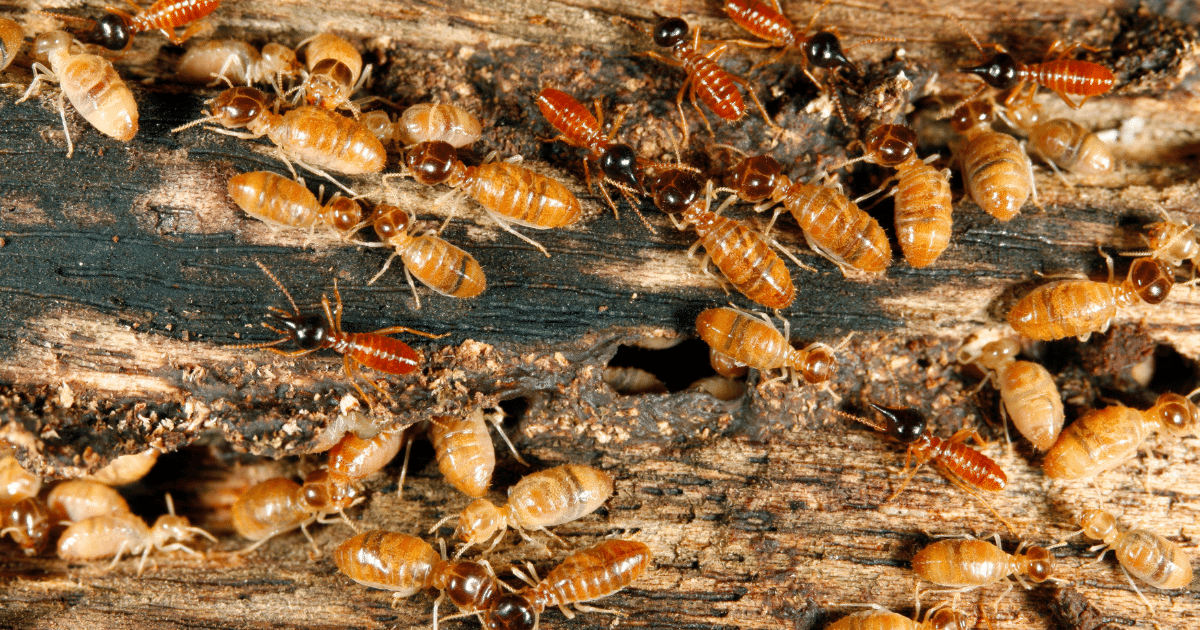
Termites, often dismissed as mere pests, hold a world of wonder within their tiny frames. As we peer into their complex societies and delve into their remarkable behaviors, we uncover a realm of intriguing traits that challenge our understanding of the insect world. From their intricate social structures to the enigmatic spraying behavior of certain species, termites continue to captivate researchers and enthusiasts alike.
The Social Complexity of Termite Colonies
Termites exhibit a sophisticated social structure, organized into castes that perform distinct roles. Workers tirelessly forage for food and construct nests, soldiers defend the colony with their formidable mandibles, and reproductives, including the queen and king, ensure the continuity of the colony. This division of labor and communication through pheromones exemplify the harmony within the termite community.
Master Architects: Termite Nests and Mounds
Termites are nature’s architects, constructing a variety of nests and mounds tailored to their unique habitats. Subterranean termites build elaborate underground tunnels and chambers, while arboreal species fashion aerial nests within trees. Mound-building termites create towering structures that regulate temperature and humidity, showcasing their innate engineering prowess.
Extraordinary Digestive Abilities
Termites possess a remarkable ability to digest cellulose, a component of plant cell walls that most animals struggle to break down. This feat is achieved through a symbiotic relationship with gut microbes that aid in cellulose and lignin digestion. This partnership not only sustains termites but also contributes to nutrient cycling, promoting ecosystem health.
Eusociality: The Key to Termite Success
Eusociality, a rare form of social organization, is a defining feature of termites. Comparisons to other eusocial insects like ants and bees reveal unique adaptations that have contributed to termite success over millions of years. Cooperation, division of labor, and altruistic behaviors are central to the thriving termite colonies we observe today.
Chemical Warfare: Termites’ Intriguing Defense Mechanisms
Chemical communication is pivotal to termite societies, serving as a means of coordination and defense. When under threat, soldiers release alarm pheromones to alert their fellow termites, leading to a rapid response. A particularly captivating aspect of termite chemical warfare is the spraying behavior exhibited by certain species, where soldiers emit a specialized substance from their heads to repel attackers.
Unraveling the Mystery of Termite Spraying Behavior
Termite spraying behavior is a subject of intense study and curiosity. When disturbed, soldiers of certain termite species expel a defensive liquid from a nozzle-like structure on their heads. This chemical cocktail contains a mixture of compounds, including sticky substances and toxins, that deter predators and maintain colony security. Researchers are exploring the composition and functions of these sprays, with potential applications in pest control and biomimetic technologies. We found more information on this website.
Symbiotic Relationships: Termites’ Partnerships with Other Species
Termites are not isolated entities but rather integral components of ecosystems, engaging in complex relationships with other species. Symbiotic gut microbes aid in digestion, while termites engineer habitats that support diverse flora and fauna. Their interactions with fungi, bacteria, and protozoa contribute to nutrient cycling and influence ecosystem dynamics.
Bizarre Reproductive Strategies
Termites display intriguing reproductive strategies, such as nuptial flights where winged reproductives embark on daring journeys to establish new colonies. Mating rituals and competition for reproductive status shed light on the complexities of termite reproduction. Factors like environmental cues and genetic predisposition play a role in determining which individuals become future kings and queens.
Conclusion
The world of termites is a testament to the incredible diversity and ingenuity that exists within the insect realm. From their advanced social systems to their mysterious spraying behavior, termites challenge our preconceptions and invite us to explore the intricacies of their lives. As we continue to unveil their secrets, we gain a deeper appreciation for the vital role termites play in maintaining the delicate balance of ecosystems and for the wonder that lies within these seemingly simple insects.
Leave a Reply